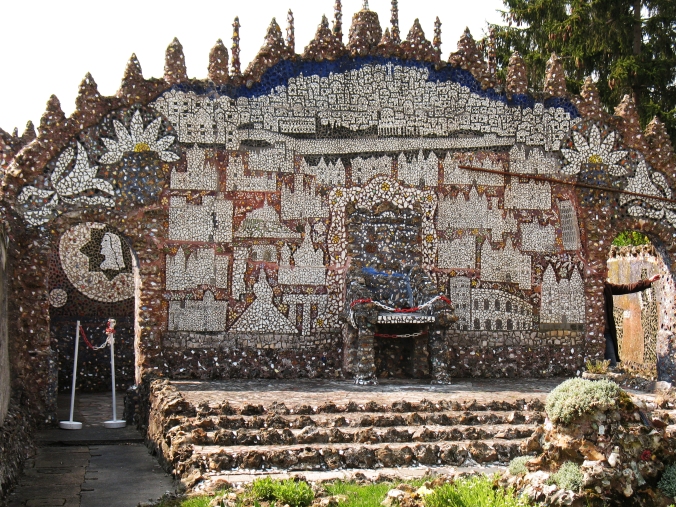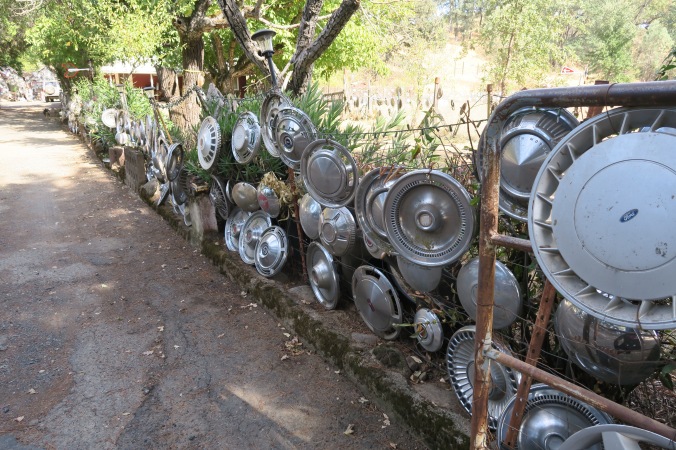My last post, “Creating an Ocean…” brought you just outside the city of Chartres, France. And surely if you are just outside Chartres you will continue on into Chartres. And surely you will visit the famous, famous Chartres Cathedral.


And I know, because you are a “Quirk” reader, you will not simply finish with the cathedral, go to a cafe, then hop back on the next train to find the next cathedral in the next town. You will go to “Maison Picassiette“, a reasonable walk from the cathedral and one of France’s most famous quirky sites.
Leaving the cathedral and the lovely half-timbered houses of the center city behind


you will enter the neighborhood where Raymond Isadore and his wife Adrienne Dousset made their home. Isadore, a cemetery sweeper, built his house in 1930, cozy enough, but nothing that would have stood out in his ordinary surroundings. On a walk one day his eye was attracted to a pretty shard of broken pottery which he picked up and brought home. And so, it is said, began his collecting habit. Soon he was frequenting rubbish dumps, actively seeking out cast away crockery. With the little pile he had amassed in his garden Isadore began a modest mosaic project on the wall of his home.

Pleased with the effect, Isadore carried on.

In fact he didn’t stop until twenty four years later, when he had covered every surface of his house, inside and out.

From walls to floors to ceilings
interspersed here and there with his folkloric paintings.


With his wife’s approval, when all the structural surfaces were covered, Raymond Isadore tackled the furniture.




An autodidact, Isadore paid homage to great artists and monuments, including these mosaic portraits of French cathedrals adorning the garden wall. And in the center–a throne for his Madame and himself to rest a spell and admire his work.


Word of his marvel spread, and in 1954 Pablo Picasso paid a visit. Some say that the “Pic” in “Picassiette”, the nickname given to Isadore by neighbors, refers to Picasso. Assiette is the french work for plate. But most translations converge on “scrounger” or “scavenger”. Whatever the case, the word “picassiette” coined for Raymond Isadore has entered the French lexicon, interchangeable with the term for mosaic-ing. Come to think of it, we’d be well served to use “picassiette” as I see spell check does not approve of mosaic-ing or mosaicing, or mosaicking.
Raymond Isadore completed his ouevre in 1962, two years and one day before he turned 65. I’m going to go out on a limb and say he was a happy man.
If you are itching to see more and don’t have a trip to France in your back pocket here’s a nice walk-through video.






























































 Located just one hour’s drive north of San Francisco, in Pope Valley, Hubcap Ranch was the retirement home of
Located just one hour’s drive north of San Francisco, in Pope Valley, Hubcap Ranch was the retirement home of 








 Following in the enlightened footsteps of the hospital’s founder, the modern day (and current) director,
Following in the enlightened footsteps of the hospital’s founder, the modern day (and current) director, 
















































